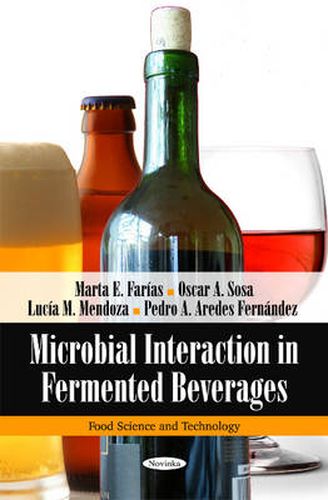Readings Newsletter
Become a Readings Member to make your shopping experience even easier.
Sign in or sign up for free!
You’re not far away from qualifying for FREE standard shipping within Australia
You’ve qualified for FREE standard shipping within Australia
The cart is loading…






In complex microbial ecosystems constituted by a mixture of different species and strains, interactions will occur between individual micro-organisms. The general environment from which raw food products originate and the microbiological quality of the products in its processed state admits yeast growth. Moreover, the types of interaction found in mixed populations of micro-organisms are classified as direct or indirect interactions. Indirect interaction such as competition, commensalism, mutualism, amensalism or antagonism and neutralism; and direct interaction to predation and parasitism could be occurring. This book examines such interactions in fermented foods and beverages, which develop their nutritional and organoleptic qualities as a result of the metabolic activity of a succession of different micro-organisms. Furthermore, it is known that many microbes use extracellular signals to transmit information about population density and environmental conditions. The authors examine the process as microbes continually respond to varying medium conditions, in which quorum-sensing regulation that is modulated by physical factors and nutrients availability affect the interactions produced between micro-organisms.
$9.00 standard shipping within Australia
FREE standard shipping within Australia for orders over $100.00
Express & International shipping calculated at checkout
In complex microbial ecosystems constituted by a mixture of different species and strains, interactions will occur between individual micro-organisms. The general environment from which raw food products originate and the microbiological quality of the products in its processed state admits yeast growth. Moreover, the types of interaction found in mixed populations of micro-organisms are classified as direct or indirect interactions. Indirect interaction such as competition, commensalism, mutualism, amensalism or antagonism and neutralism; and direct interaction to predation and parasitism could be occurring. This book examines such interactions in fermented foods and beverages, which develop their nutritional and organoleptic qualities as a result of the metabolic activity of a succession of different micro-organisms. Furthermore, it is known that many microbes use extracellular signals to transmit information about population density and environmental conditions. The authors examine the process as microbes continually respond to varying medium conditions, in which quorum-sensing regulation that is modulated by physical factors and nutrients availability affect the interactions produced between micro-organisms.